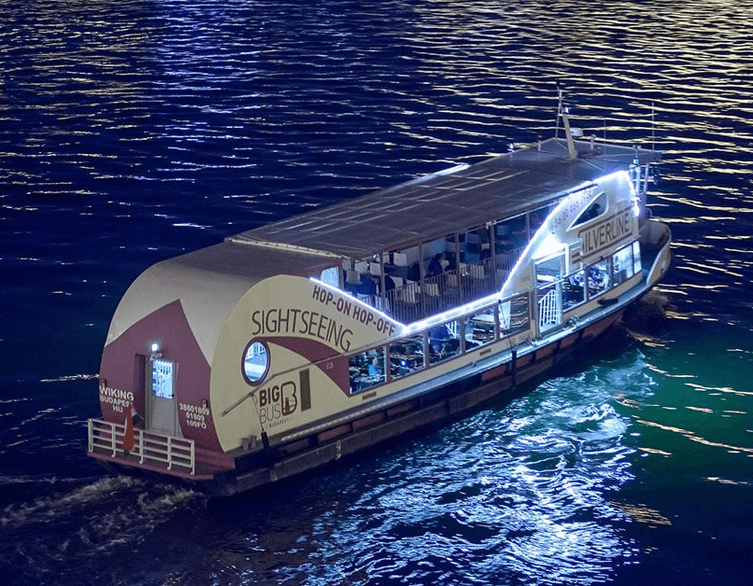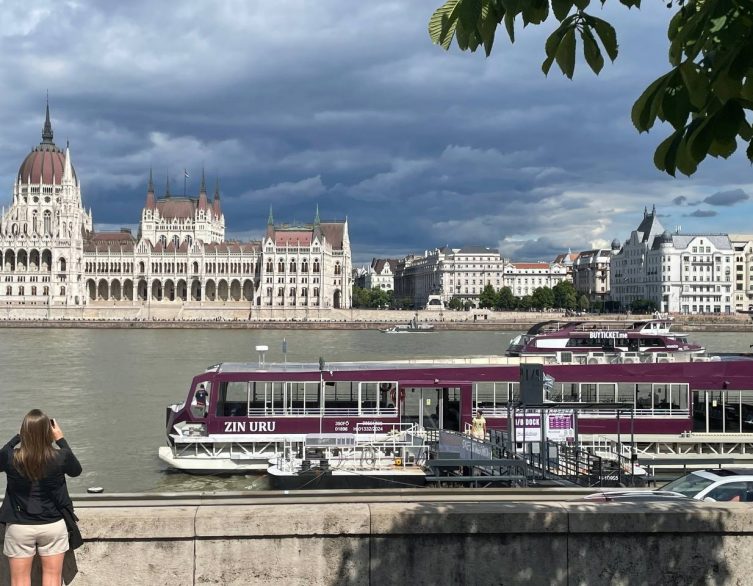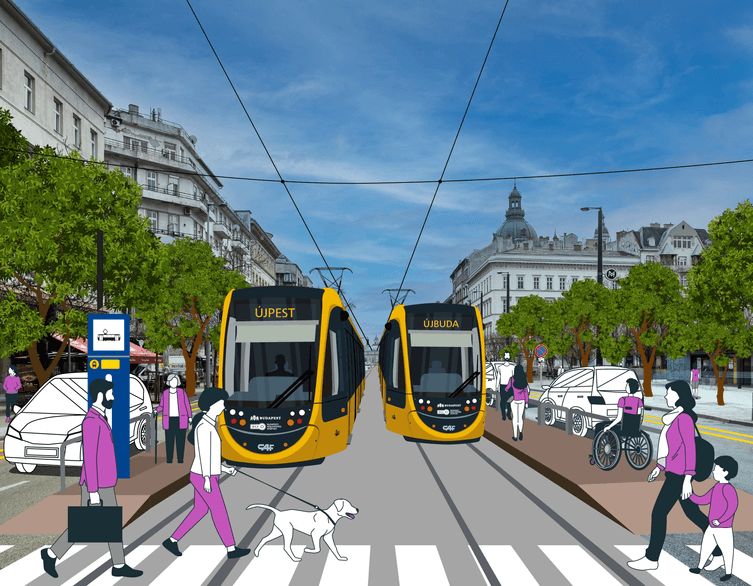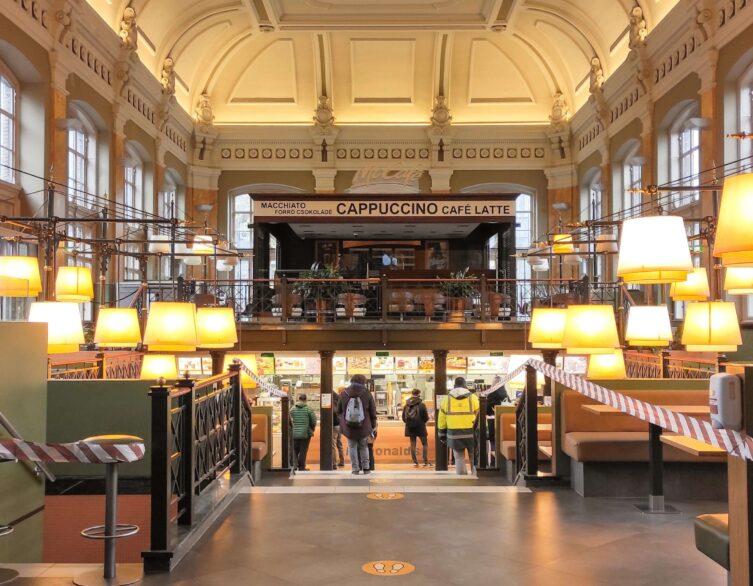Budapest’s New Tram Axis: Transforming the Cityscape and Mobility with the Nyugati Square Renewal
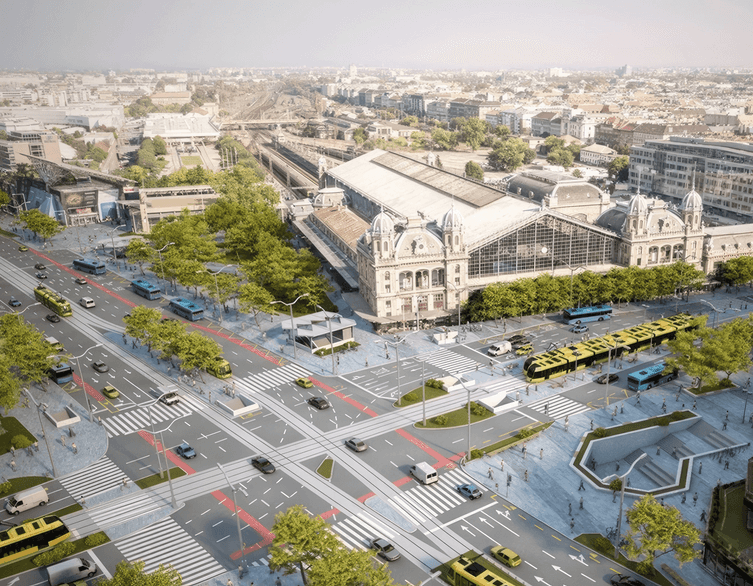
Budapest is on the cusp of a major transformation in its urban mobility and cityscape as the long-planned Pest Interlaced Tram Project moves into its second, decisive phase. This development promises to reshape the way locals and visitors travel across the city by creating a fast, seamless tram connection between North Pest and South Buda, while also reimagining one of Budapest’s busiest transportation hubs—Nyugati Square.
Farewell to the Nyugati Square Overpass
A striking feature of this project is the removal of the Nyugati Square overpass, an aging structure dating back to the 1970s. Its demolition will breathe new life into the area by making the public space more open, accessible, and aesthetically pleasing. The overpass’ removal is not just a functional upgrade—it represents a rejuvenation of the square, which will become brighter, more ventilated, and easier to navigate both on foot and by vehicle.
Alongside this, the inner sections of Bajcsy-Zsilinszky Road and Váci Road, two of the capital’s key urban arteries, will undergo a thoughtful redesign. The goal is to restore their vibrancy as dynamic cultural and commercial corridors. This echoes successful renewals seen elsewhere in Budapest, such as on the Museum Boulevard and Károly Boulevard, where pedestrian-friendly and green urban spaces now invite locals and tourists alike to stroll, bike, and explore comfortably.
A Seamless Tram Connection
At the heart of the initiative is a newly planned 2.2-kilometer tram route connecting Deák Ferenc Square and Lehel Square, reviving tram tracks along Bajcsy-Zsilinszky Road and the southern inner part of Váci Road. This route will finally link North Pest and South Buda with a direct, no-transfer tram service, significantly easing daily commutes and sightseeing journeys across the Danube divide.
The Budapest Transport Center (BKK) has entrusted the renowned FŐMTERV Zrt. with the project’s detailed design, including preparing all necessary permits and construction documents. They are also tasked with ensuring the stations are fully accessible, prioritizing barrier-free access for all passengers, including those with disabilities.
Best deals of Budapest
Urban Design with People in Mind
This redevelopment isn’t merely about transportation efficiency. It places strong emphasis on creating a safer, more orderly environment for pedestrians and cyclists, supported by protected infrastructure. The surrounding streets will receive dedicated improvements such as renewed tree lines and greener public areas, which will enhance the everyday experience for residents and tourists.
Traffic management is thoughtfully planned to divert transit vehicles away from the inner city, encouraging through-traffic to use bypass routes. At the same time, access will remain smooth for visitors whose destination is the city center, balancing convenience with congestion reduction.
Engaging the Community Throughout Planning
Community voices and expert feedback have been actively sought throughout the planning process. Civil organizations and professional associations contributed suggestions during forums hosted by BKK, leading to several innovative refinements in the technical plans. This ongoing dialogue ensures that the project addresses local needs and respects Budapest’s unique urban fabric.
Timeline and Funding
While the detailed construction plans are expected by the second half of 2028, preparations are already underway with the support of European Union funding and pre-financing from the Budapest Municipality. This strategic investment reinforces Budapest’s commitment to sustainable, pedestrian-friendly city development and improved urban transport that benefits both residents and the millions of tourists who explore the city each year.
What This Means for Visitors
For travelers planning to visit Budapest in the coming years, this transformation offers exciting prospects. Navigating the city will become more straightforward and pleasant, with modern trams whisking passengers across iconic neighborhoods without the hassle of transfers. Meanwhile, the reshaped Nyugati Square will provide a welcoming gateway and a more enjoyable urban space rich in history and contemporary charm.
As Budapest strides boldly into the future, this project exemplifies the city’s dedication to blending mobility innovation with urban renewal—ensuring the capital remains a vibrant, accessible destination on Europe’s travel map.
Related news















